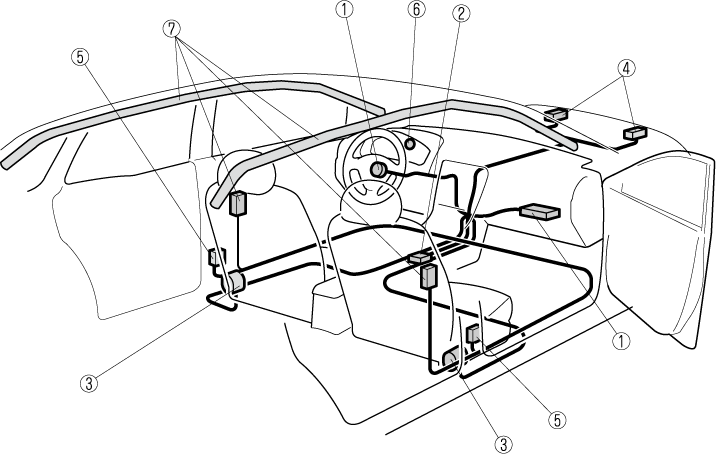

Supplementary Restraint System Components
(With Front Passenger Occupant Classification System)

(Without Front Passenger Occupant Classification System)

 Driver/Front passenger inflators and air bags
Driver/Front passenger inflators and air bags
 Roll-over sensor (Some Models), crash sensors, and diagnostic module (SAS unit)
Roll-over sensor (Some Models), crash sensors, and diagnostic module (SAS unit)
 Seat belt pretensioners (Search)
Seat belt pretensioners (Search)
 Front air bag sensors
Front air bag sensors
 Side crash sensors
Side crash sensors
 Air bag/seat belt pretensioner system warning light (Search)
Air bag/seat belt pretensioner system warning light (Search)
 Side and curtain inflators and air bags
Side and curtain inflators and air bags
 Front passenger air bag deactivation indicator light (Some Models) (Search)
Front passenger air bag deactivation indicator light (Some Models) (Search)
 Front passenger occupant classification sensor (Some Models) (Search)
Front passenger occupant classification sensor (Some Models) (Search)
 Front passenger occupant classification module (Some Models)
Front passenger occupant classification module (Some Models)
 Driver seat slide position sensor (Some Models) (Search)
Driver seat slide position sensor (Some Models) (Search)


